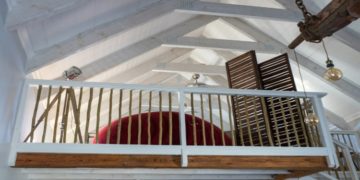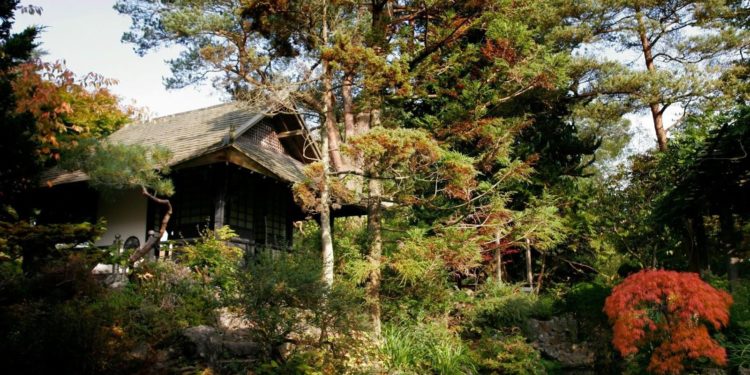As the UK’s population continues to grow, its lifestyle has evolved, and the 15-minute city concept is becoming more popular. The 15-minute lifestyle is a future visionary way of life where every essential need, including work, education, and wellness, is accessible within fifteen minutes of walk.
In the center of this is a high demand for dedicated home offices like garden cabins.
With garden cabins, small business owners and remote workers can run their ventures from home without clashing with domestic life.
Here is what to know about garden cabins in relation to the future of the 15-minute city in the UK.
What Is the 15-Minute City Concept?
The 15-minute city is an urban-planning idea that transforms the UK’s daily necessities. From shopping to schooling to entertainment, residents can get their daily needs within 15 minutes from their homes by walking or riding bikes.
The idea began to gain traction in 2016 when the popular urbanist Carlos Moreno threw his weight behind the idea. Identifying its potential, urban development organizations, like C40 Cities, also advocate the model.
While this lifestyle idea focuses on improving quality of life, major potentials include reduced reliance on cars (to cut carbon emissions) and improved community connection.
UK cities embrace this model since it offers a practical solution to achieving sustainable living and reducing urban congestion. For example, Oxford’s low-traffic neighbourhoods and London’s commitment to improved cycling infrastructure are signs that the UK is a big fan of the 15-minute concept.
The Rise of Garden Cabins as Micro-Infrastructure
Garden cabins are becoming a popular solution to support the growing adoption of the 15-minute city idea. Once regarded as simple sheds, the garden offices now take center stage in turning backyard spaces into a functional, flexible micro infrastructure to run businesses.
With garden cabins, business owners don’t need to drive for hours to their business, as they can turn their garden space into a micro-infrastructure to run business activities and meet clients. Businesses adopting log cabins include therapy, fitness centers, and education centers.
Remote workers are not left behind in this trend. Garden cabins also serve as a dedicated workspace for remote workers, removing the need to travel to city centers to offer their services.
With reduced needs to commute to the city for daily life needs, communities can be self-reliant and reduce the urban population.
Case Examples: Practical Uses Supporting the 15-Minute Model
Let’s take a look at a few examples:
Oscar, a graphic designer in Bristol, would commute to the city to meet clients and work on projects. However, he later decided to work from home and practice the 15-minute model.
Oscar started his new lifestyle by transforming his garden space into a garden cabin where he now works from without leaving home. Now that he works from home, he doesn’t need to take rides, saving him time to focus on other tasks necessary for enhanced productivity.
With this, Oscar now offers services to his local community members and improves local economies.
Another example is Olivia, a restaurant owner who has turned her garden space into a restaurant where she serves local delicacies to her neighbourhood. Thanks to Olivia’s garden-cabin-based restaurants, locals don’t have to commute long distances to get their meals.
Environmental and Social Benefits
Incorporating the 15-minute city model and garden cabins into the UK urban life offers immense environmental and social benefits, including reduced gas emissions and community connection.
Traveling long distances to work means a high dependence rate on cars, which run on fuel and emit harmful gases, carbon, into the environment. The 15-minute city idea eliminates this concern by reducing dependence on fuel-powered vehicles.
For example, a study by C40 Cities reported that the 15-minute model can help the UK cut carbon emissions by up to 15%, especially in areas with high adoption.
On the social-economy front, the 15-minute city structure contributes to local economies by encouraging residents to offer diverse services to their fellow community members. An example is Olivia, whose restaurants serve her community, a practice that helps her stay connected to her community.
Garden cabins support this idea by offering a practical workspace where locals can run businesses from home and offer diverse services to their neighbourhoods.
Planning and Accessibility Considerations
Installing a garden cabin raises different questions; they include planning permission, budget, and space requirements.
Planning Permission
While many installations are eligible for planning permission rights, some garden cabins over a certain size require installation permits. It is, therefore, your duty to check with your local council about the necessary papers for your installation.
Budget
Although garden cabins are a cheap investment, their potentials overwhelm prices and are instrumental to materializing the idea of the 15-minute city in the UK.
The cost of garden cabin installation can run into £20,000 in units with high-end features, but there are cheap units of around £5,000 for potential owners on tight budgets.
Regardless, while the upfront cost can be high, the return on garden cabins is impressive.
Space
Before you go on to start your garden cabin project, ask yourself if you have enough garden space to actualize your idea. However, keep in mind that you can design your garden cabin layout according to your available space.
Conclusion
Garden cabins are no more regular home offices; they play a vital role in the UK’s effort to embrace the 15-minute city model and transform urban life.
With comfortable spaces for business activities, business owners and professionals can run services from home to locals and enhance neighbourhood economies. Plus, reduced commuting time helps reduce fuel reliance and carbon emissions to keep the environment healthy.











































































